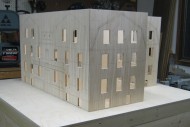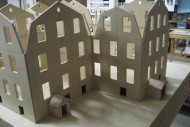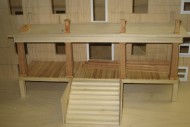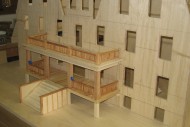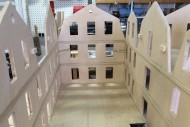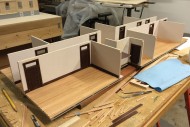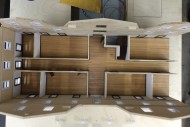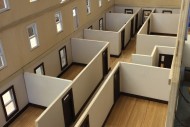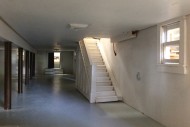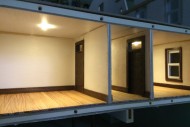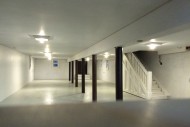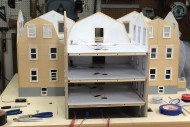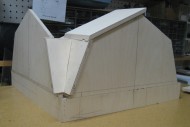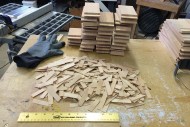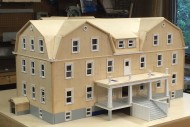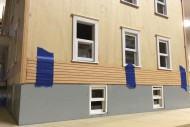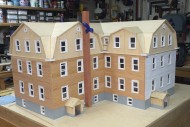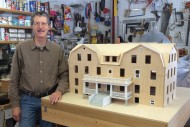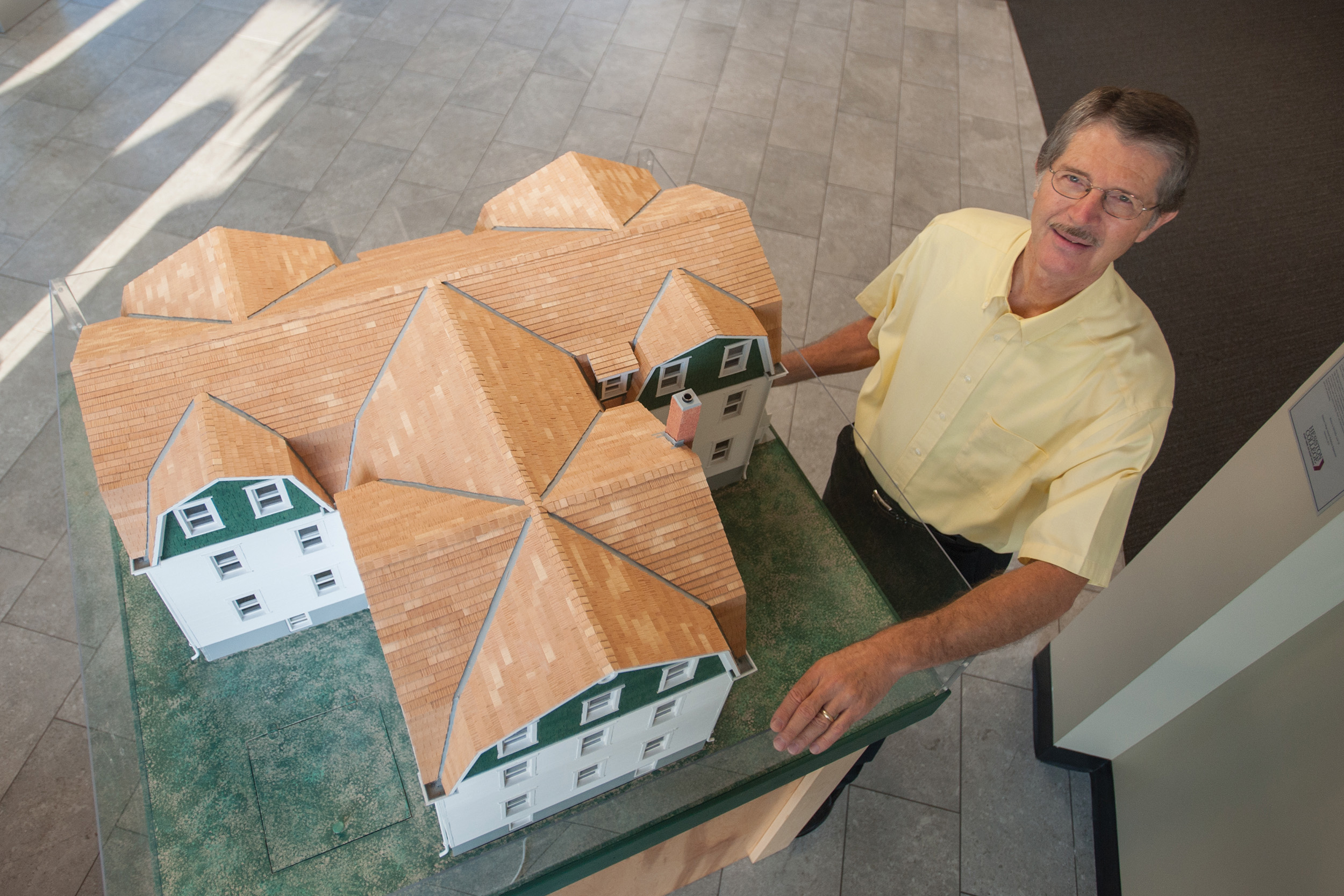
For 86 years, Green Gables stood on the Kansas prairie as a visual marker for Hesston College and the first physical realization of the college’s founders’ dreams. For alumni through the mid-1990s, it was a place of growth, antics and memories that define the Hesston Experience. In 1995 the historic building was torn down due to deteriorating conditions, but in 2015, Green Gables made a return to the Hesston College campus to acquaint new and future generations of students with its history.
Before Green Gables was torn down in June 1995, Mel Diller Ac66, ’68 (Hesston), a hobbyist woodworker, had the foresight to collect photos and measurements of the building in the event that he would someday build a scale model. He even went so far as to have his pilot son, Aaron Diller ’95, take him up in a Cessna 150 to get pictures of the roofline.
For 14 years Diller’s research sat unused, until the summer of 2009 when Dallas Stutzman ’76, director of Alumni and Church Relations, contacted him about building a model of Green Gables for the college’s centennial celebration that fall. Diller agreed to the project but said it might be the following spring until it would be completed.
“When I agreed to the project, I didn’t know what the finished product would or should look like,” said Diller.
As planning and construction commenced, the scope of the project increased – both in the sense of the details involved and in what it meant to Diller personally.
Over its lifetime, Green Gables went through a series of transformations to fit the changing needs of Hesston College and its students. Diller decided to recreate Green Gables in its original 1909 form – which excluded features such as fire escapes – in 1/24th scale. Blueprints from the original construction no longer existed, but vibrant descriptions from John Sharp’s ’73 centennial history, Hesston College 1909-2009: A School on the Prairie (Cascadia Publishing House, 2009), helped Diller create the building to mirror its earliest days.
“What took the most time was figuring out how to make to scale 95 windows that operate, almost 2,500 sections of wood shingles, siding, flooring, five panel doors and transoms for the first floor, a lighting system, stairways and porch railing,” said Diller.
The porch railing, columns and floor were created from original salvaged wood. As Diller and his wife Norma collected material prior to the demolition, they discovered on the paper beneath the siding near the front doors, a large heart with two names inscribed in it. Even that Valentine lives on beneath the model siding, now bearing the Dillers’ names.
Diller also completed the interior of the first floor and basement to reflect the original layout – a challenge since so few photos exist of the original interior and numerous renovations had been done over the years.
Over the six years and hundreds of hours of work of the model’s construction, the project took on more significance for Diller than just a woodworking project.
“Green Gables holds so much importance for the start of Hesston College, but as I worked on the building, I came to realize it was just that: a building, built to suit the needs of Hesston College at that time,” said Diller. “More importantly, it was and is the people that make Hesston College what it is.”
Helping Diller to reach that realization was the photo that appears on the cover of A School on the Prairie. Pictured there are the first students, faculty and staff of Hesston College in 1909 outside of the newly constructed Green Gables – yet unnamed – but the only physical presence of the brand new school. Leaning against the porch railing are John and Henrietta Cooprider, the building’s first caretaker and cook, and Diller’s great-grandparents. Their children were among some of the first students and faculty, and they began a legacy that, to date, spans five generations of Diller’s family.
“This is just part of the fabric that makes Hesston College what it is today as a growing, vibrant and varied institution,” said Diller. “Each person’s stories and experiences are what make Hesston College so special.”
As the model was unveiled in its new home in the front lobby of Northlawn during Homecoming Weekend 2015, alumni reminisced on their own memories and stories of Green Gables – many of which, noted Diller, took place on the missing fire escapes. Those who lived in the building pointed out the windows of the rooms in which they lived and shared stories with one another of the antics and growth that took place within the building’s walls.
During commencement weekend 1995, more than 100 alumni and friends gathered to say farewell to Green Gables. Orpha Zimmerly, matron and dean of women in the building from 1946-53 (and in Erb Hall from 1964-71) presented a monologue giving Green Gables a first-person voice:
I’m only a building but in the providence of God [I] have been a specific building for a specific cause for a specific time. … Tucked within me are millions of secrets, prayers, visions, dreams and commitments. … I would feel very honored to have good pictures of me framed to grace appropriate places on campus.
Perhaps a full model will suffice.
The photos below show the progression of the scale model’s construction. Photos provided by Mel Diller.


